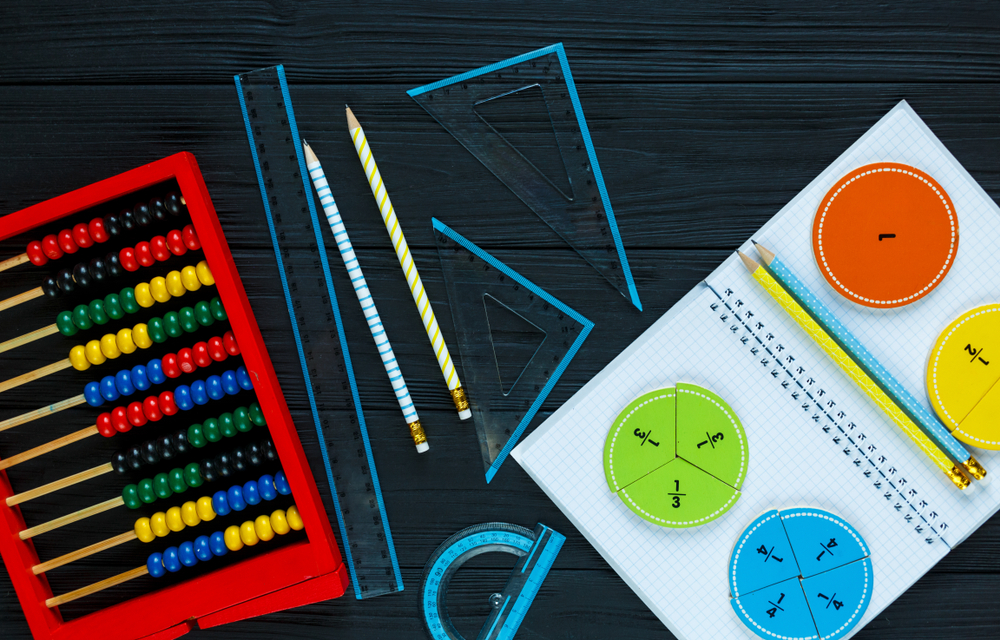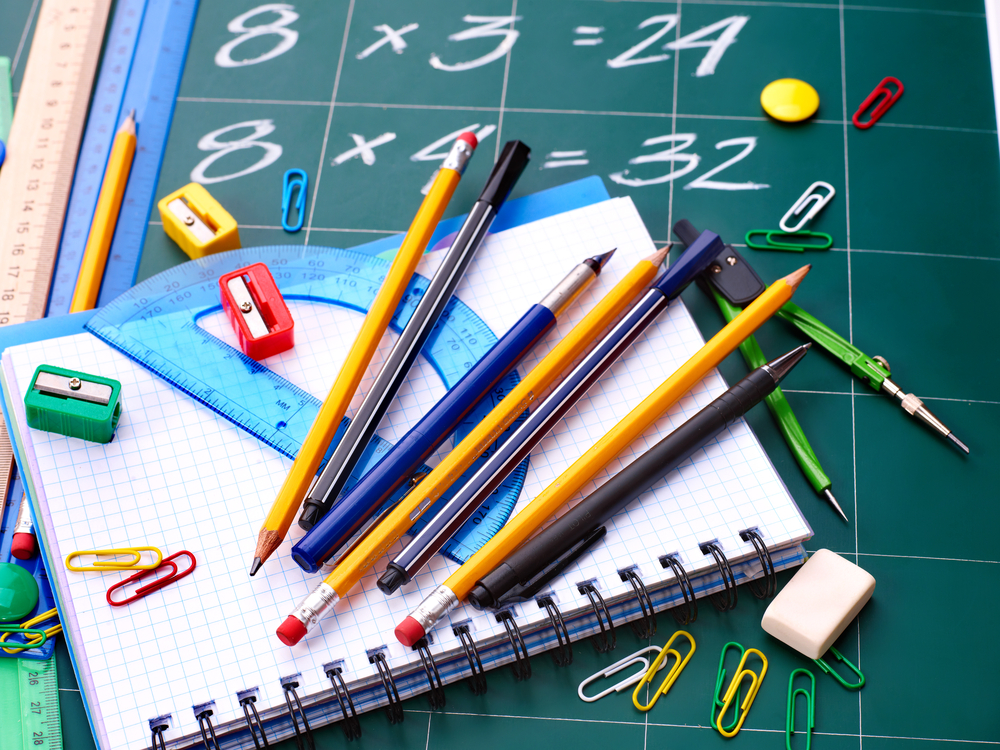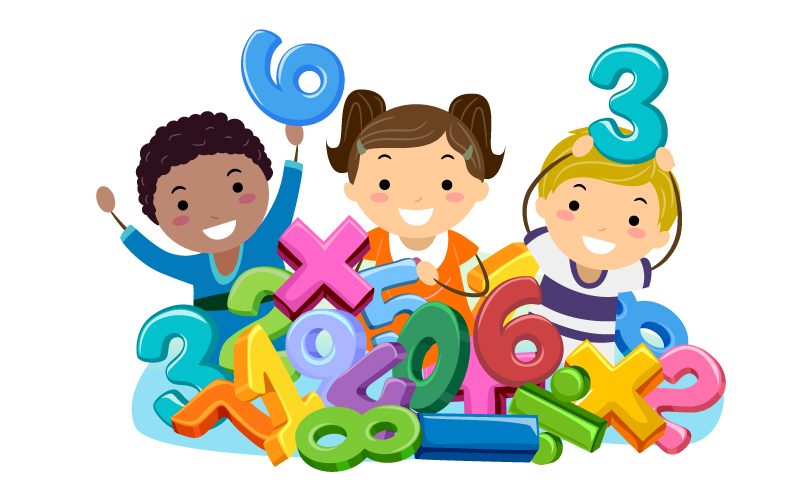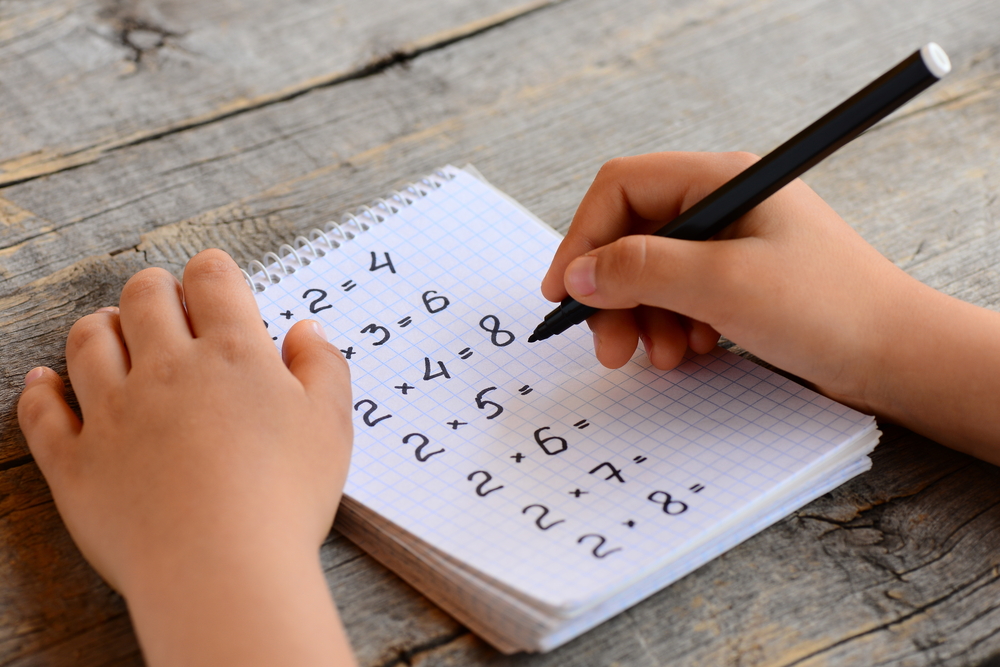Reading comprehension Arrays Worksheets for Ages 3-9
5 filtered results
-
From - To
Enhance your child's reading comprehension skills with our engaging Arrays Worksheets designed for Ages 3-9. These interactive worksheets introduce young learners to the concept of arrays while fostering critical thinking and reading skills. Filled with fun activities, children will practice identifying arrays, counting objects, and describing patterns in a context that encourages exploration. Our carefully curated content supports early literacy development by aligning with educational standards and incorporating colorful visuals to captivate young minds. Make learning an adventure with our user-friendly, printable resources that promote skill mastery and confidence in reading comprehension. Perfect for at-home or classroom use!
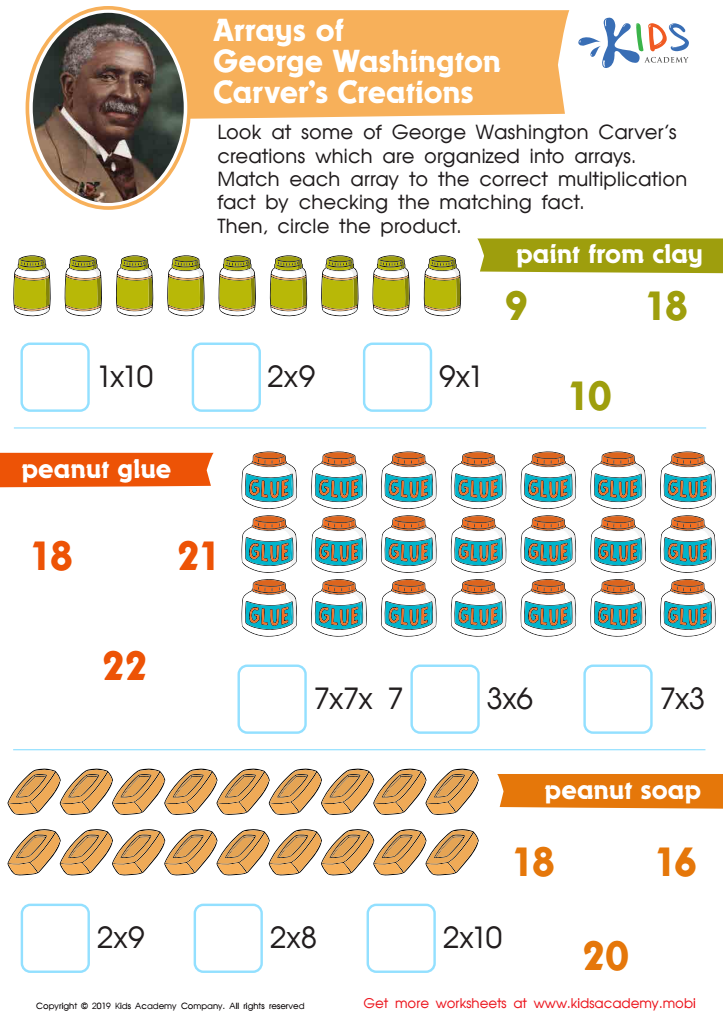

Arrays of George Washington Carver’s Creations Worksheet
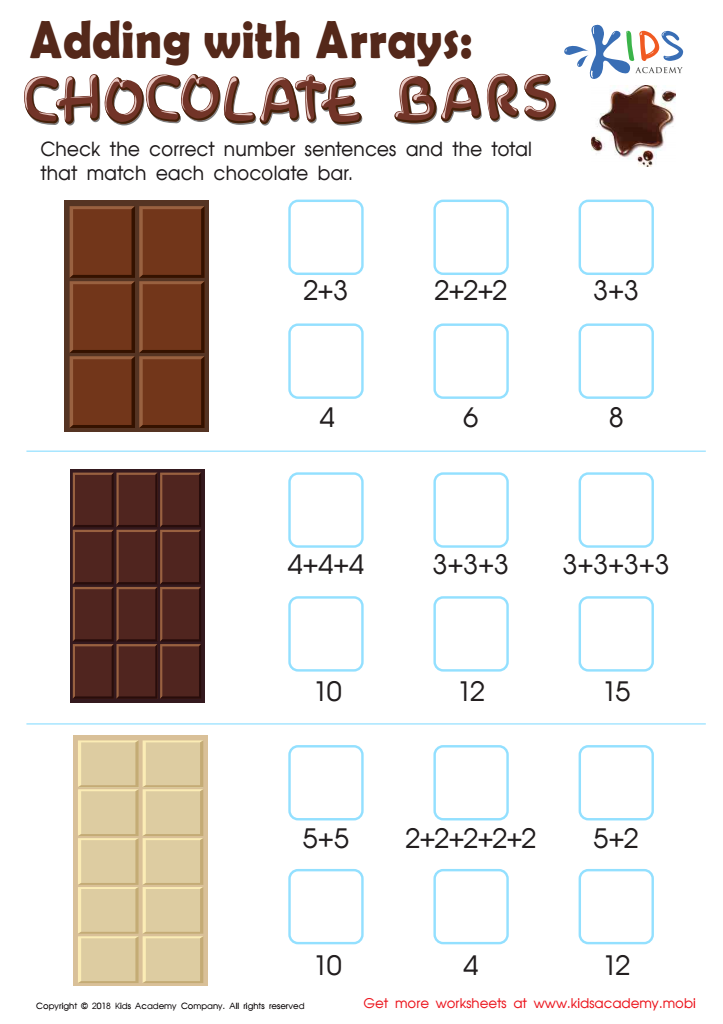

Adding with Arrays: Chocolate Bars Worksheet
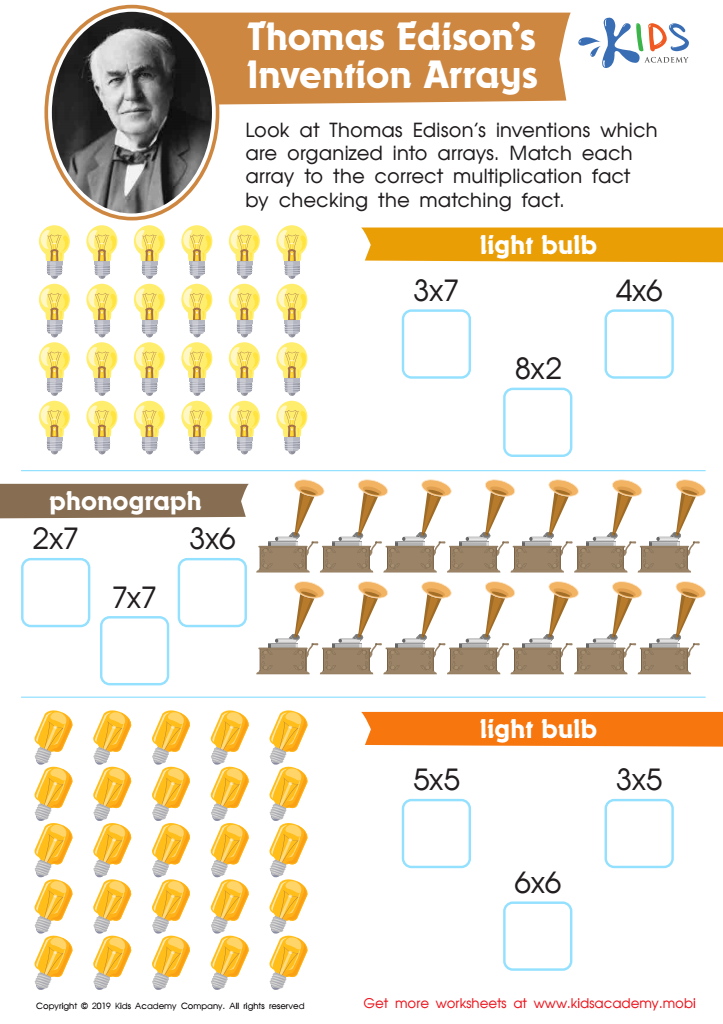

Thomas Edison’s Invention Arrays Worksheet
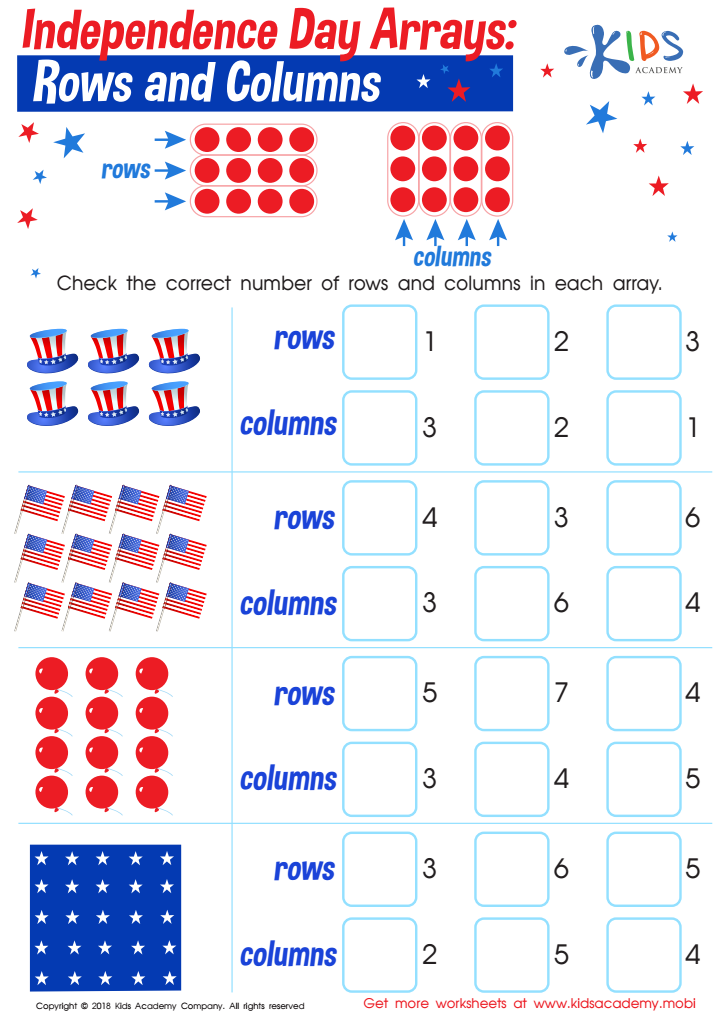

Independence Day Arrays: Rows and Columns Worksheet
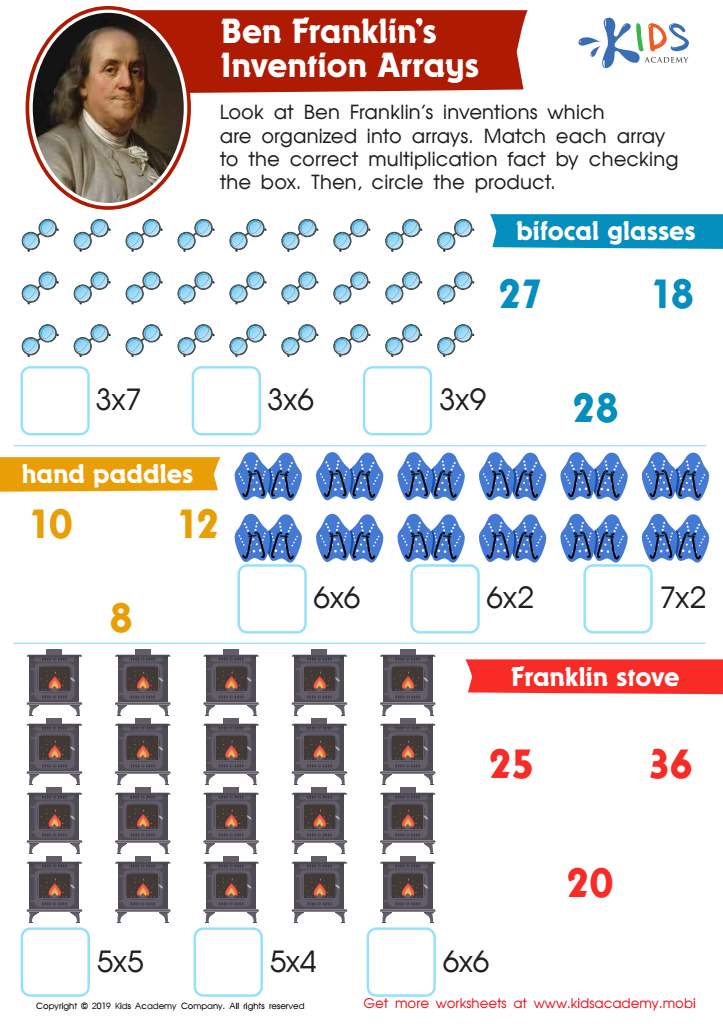

Ben Franklin’s Invention Arrays Worksheet
Parents and teachers should care about Reading Comprehension Arrays for ages 3-9 because early literacy skills form the foundation for future academic success. Reading comprehension is not just about decoding words; it’s about understanding, analyzing, and engaging with texts. Comprehension arrays, which typically categorize reading strategies and skill sets, help young learners grasp key concepts, make connections, and build critical thinking skills.
At this age, children are highly receptive to learning, and effective comprehension strategies can boost their confidence and foster a love for reading. Engaging with comprehension arrays encourages active participation and cultivates essential skills such as summarizing, inferring, and predicting outcomes in stories, which are vital for their educational growth.
Moreover, these arrays can assist educators and caregivers in identifying areas where a child may struggle, allowing for targeted support and intervention. By emphasizing reading comprehension through structured activities and engaging materials, parents and teachers can nurture a lifelong appreciation of reading, setting children on a path toward success not only in literacy but across all areas of learning. Ultimately, investing in comprehension skills at a young age reaps significant rewards, as it empowers children to become confident, thoughtful readers and learners.
 Assign to My Students
Assign to My Students


